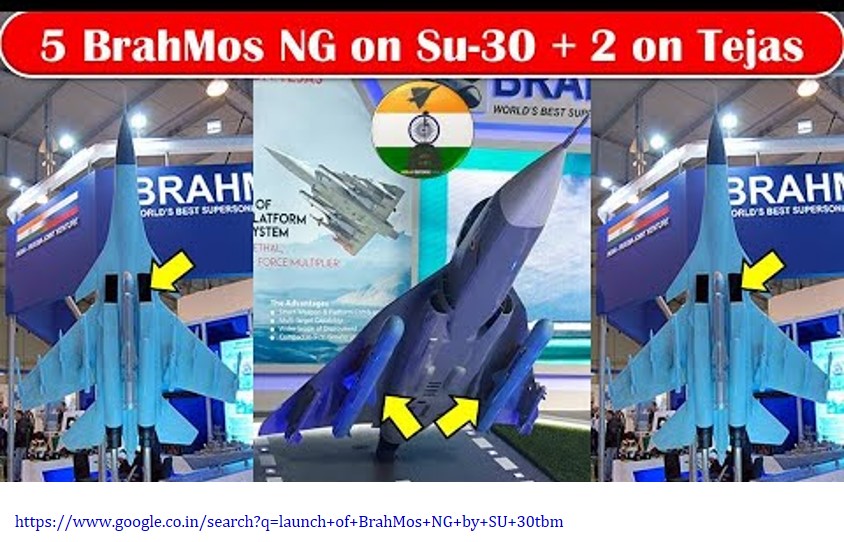Premise
A few days into the New Year and thinking of the year gone by, one gets a feel of ‘fresh air’ in the entire stance of the Ministry of Defence (MoD) and their attitude towards the entire gamut of defence procurement. A resurgent mood is evidently visible in the defence and aerospace sector, especially in the private industry.
This brief flags some important developments in the recent past that validate the above premise.
‘Framework’ – The Stagnant Water Gets a Move on
Cutting the Status quo Practice
Way back in Sep 2021, the MoD issued a defining document titled “Framework of Simulators in the Armed Forces’.[1] Why defining?
- This document for the first time attempted to put in place a simulator culture in the Armed and Para military forces; something which was conspicuous by its absence.
- Experience has it, that over years and decades the defence procurement deals not only typically remained shy of including the costs for the simulator component with the main equipment ab-initio, but also, the first axe of cost cutting (if imposed for any reason whatsoever) always fell on the simulator component of the deal (if these got included by exception in some cases).
- The Framework document called for an implementation of simulator-based training across all military domains to reduce utilisation of live ‘go-to-war’ combat equipment thus preserving their precious operational life, drastically reduce time, resources and cost of training and bring realism and objective assessment of trainees by use of enabling technologies.
The Stagnant Water
While all was good with the policy on paper, it did not get the traction it deserved. Some points:-
- The framework demanded Headquarters Integrated Defence Staff (HQ IDS) as the nodal agency to draw out an overarching policy to optimise the utilisation of the simulators in the armed forces and the Service HQs (SHQs) to identify new areas of application of simulators and formulate appropriate policies to acquire them for use [2].
- Both the above remained ‘slow movers’ initially.
Welcome Change
As the year rolled, framework policy started to thaw. The shot-in the arm came with the announcement of Agnipath Pravesh Yojna (APY) where the requirement to conduct quality and realistic training in a drastically reduced time and cost became the key issue. The current status is a positive one. A brief glimpse:-
- The implementation of the Framework document is moving forward steadily with pro-active effort from all stakeholders.
- Service HQs are revamping their requirement of Live-Virtual- Constructive (LVC) simulators.
- There is a growing realisation among the SHQs on the need to induct high-quality and high-technology simulators in their training Centres.
- MoD has issued Request for Proposals for procurement of a variety of simulators through the Fast Track Procedure (FTP) under the Emergency Procurement Category Buy Indian (IDDM- Indian Design, Development and Manufacture) for the training of Agniveers.
In a befitting response, the Industry (both public and private) is gearing up to meet the current and the futuristic demand of simulators. A visit to Zen Technologies Limited, a private sector leader in simulator domain opens the eyes to where our industry has reached[3]. Today, in-house, the nation is capable of providing the following in the simulator domain:-
- All types of LVC simulators based on cutting edge technologies.
- Weapon replicas that provide unlimited opportunity for simulated live fire with zero expenditure of ammunition.
- Automated live fire ranges in field or containerised spaces.
- Tailor-made spaces for live and simulated training for counter insurgency environment.
- Opportunity for realistic training to counter drone-based threats.
- Opportunities for two-way opposed training in tactical scenario with a worthwhile adversary.
- Actual air and ground threat play under realistic battlefield conditions.
- Objective and digital assessment of trainees represented as Combat Readiness Score (CRS).
An Indian Chip-Yes, Proudly Indian!
Microchips drive technology is an understatement. More correctly, microchips drive HUMANITY!... From nukes to satellites to missiles to banking to finance to economy to the roadside ATM, everything runs on microchips. Microchip - a single ‘silicon wafer’ all of a few micrometres (down to a few nanometres now) storing on its tiny existence, hundreds and thousands and millions of micro-electronic circuits capable of carrying out gigantic level of processes and computations in a few microseconds. A System-on-Chips (SoC)[4] as it is normally referred
The World Scene and our ‘they also ran’ Status
- The world is getting increasingly horrified to realise that they are overly dependent for their microchips on a single country -Taiwan. What-if -scenarios are being played with China in focus.
- Just for records a single microchip company in Taiwan (TSMC) has 55% of the global share for contract chip fabrication (OPEC world-wide oil share is 40%!).[5]
- Front-ranking countries in the world (US, China, France, Germany, Japan, South Korea etc.) are investing billions of dollars to secure their microchip supply and remain on the cutting edge of technology.
- US has signed into law the CHIPS and Science Act of 2022 on 09 Aug with a $ 250 Bn investment in the semiconductor research and Development (R&D) sector[6]. It is also investing hugely to block China to acquire latest technology in microchips (further details not covered).
- Two things matter in chips – size and speed of processing. In size, the current global cutting edge is at 7-15 nanometre or NM (one nanometre is equal to one billionth of a metre or 0.000000001m). IBM’s latest chip is 2NM in size with 50 billion transistors on it[7]. On the speed of processing data the leading edge is about 5 GHZ while the scientist are predicting a theoretical possibility of 1 petahertz (one million GHZ)[8].
In the above scene we are here:-
- We have two indigenous microchips (AJIT and Moushik) both in 180 nm technology domain’.[9]
- AJIT has a speed of 70-120 MHZ[10]. Moushik processes data at 100 MHz.[11]
- The Semi-Conductor Laboratory (SCL) is the only microprocessor manufacturing facility in India. It was gutted by fire 07 Feb 1989 (for suspicious reasons) wherein, its major imported facilities were destroyed.
- As of date SCL has the capability to make microchips devices in the range of 0.8 micrometres. This is planned to be improved to 0.35 micrometre technology.[12] This is far behind any international standard.
Feel good actions:-
- Waking up to the above realities, the Govt in Dec 2021 did a major investment of USD 10 bn ( 76000 Cr) aimed at positioning India as a key player in the global supply chain in the domain of chip and display production.[13]
- Ploughing the above and mobilising all other avenues, India today is looking at some 25 Bn investment from worldwide to boost local manufacturing of chips and display panels in India. Traction provided by G 20 Presidency will be a positive driver. Facilitators like the fiscal support to cover up to 50% of project cost for setting up semi-conductor facilities will act as catalyst.[14]
- Recently in Sep 2022, there was a positive breakthrough as microchip world leader Foxconn announced a JV with an a Indian conglomerate Vedanta to set up a domestic semiconductor facility in Gujarat to be operational in a two years time frame upto 2024.
- Following this closely in the same month, MoD has issued a Request for Proposal (RFP) for 5 Lakh microchips which will include 50,000 chips for its critical defence equipment.
- While all the microchips will be state-of-the-art, the ones for Defence use are required to be extra rugged, reliable, shock proof, vibration proof and temperature conditioned.
- These got to possess the security features suitable for the net-centric operations of the 21st Century.
Flip Side
While we are moving ahead strongly in microchips but the flip side always needs a mention:-
- It will not be an easy task to bring about the all-important ‘attitudinal change’ in the SCL to transform from a typical public sector undertaking to a vibrant international competitor.
- While the ambitious and the forward-looking RFP for microchips is all good, it is the author’s hope that the same should not become a hostage to the procurement blues of endless delays and inherent inertia.
-
The Growing Pride of Indigenous Missile Power
That the ‘path to pride’ lies in having ‘our own’ was driven home loud and clear in the recently concluded Def expo anchored on the theme of Atmanirbhar Bharat. Why only Def Expo, the flavour of ‘indigenous’ now rules the entire industry, be it public or private.
Nothing ‘walks-the-talk’ in this context more than our growing footprint in the missile power. While the Prithvis, the Agnis and the BrahMos missiles are the success stories known the world over, a lot of successes in the tactical domain embracing niche technology areas has also come in the year gone by. A small sample:-
- There was a time long ago when the entire spectrum of air defence missiles starting from Very Short Range Air Defence (VSHORAD or MANPADS: range 6-10km), to Short Range Surface-to-Air Missiles (SRSAM: 20-30km) to the Medium (MRSAM: 30-100km) and to Long Range (LRSAM: 100+ km) missiles were all imported. Today most of them are our own:-
- VSHORAD -on 27 Sep 22 DRDO successfully flight tested the indigenous VSHORAD[15] – a weapon awaited for 3 decades!
- After decades of failed attempts at procurement from abroad, the indigenous Quick Reaction SAM (QRSAM) for mechanised forces in the Tactical Battle Area (TBA) has been undergoing trails. Sure, deficiencies have been found therein- these will be addressed over time.[16]
- SRSAM – Akash missile is a worldwide success story. It has also become a great export earner. As of Jan 2021, nine countries have shown interest in Akash SRSAM. These include- Kenya, Philippines, Indonesia, UAE, Bahrain, Saudi Arabia, Egypt Vietnam and Algeria[17].
- MRSAM –Barak MRSAM (Indo-Israeli JV) now a reality. Same for LRSAM (with Indian Navy).[18]
- As is well known while the Agni series of surface-to-surface missiles (SSMs) have been our long fire arm (Agni I - range 700 km, II-2000km, III & IV – 2500-4000 km, V -5000 Km)[19] and Prithvi SSMs have been our short fire arm (Prithvi 1-150 km, Prithvi II- 250-350km, Prithvi III- 350-750km), there was a void of a purely tactical ballistic missile capable of launching conventional warheads.
- This void got filled as MoD on 25 Dec 22 cleared the induction of India’s first quasi-ballistic missile ‘Pralay’ in the armed forces. Compared to Russian Iskander and the Chinese Dong Feng 12, Pralay has a range of 150-500 km and can carry conventional payload of 350-700 kg[20]
-
- BrahMos series of cruise missiles are surging ahead with many firsts; world’s fastest supersonic cruise missile (Mach 3+) based on ramjet propulsion; world’s fastest sea-skimming missile (skimming 3-4 m from sea-surface); a weapon with unmatched accuracy of 1m CEP[21] etc. to name a few of its combat virtues.
- Starting Mar 2022, of BrahMos ER (extended range from 290-350kms) has been in the test-fire run. Apr 2022 saw the latest successful launch of the anti-ship version of BrahMos. Even the Hypersonic version BrahMos II (speed up to Mach 8, planned range 1000 km) is proceeding forward, albeit with delays (4-5 years). Its likely operationalisation is pegged at 2025-28.[22] Brahmos New Generation (NG), the smaller and a more manoeuvrable version (speed 3.5 Mach) deployable on multiple platforms is under active trials. Likely operationalization 2025.[23]

Space does not permit to tell the big story of the growing missile power, here is a passing mention of some niche technology domain missiles all carrying the tri-colour
- Rudram anti-radiation missile (ARM) has broken new ground in the range bracket of 1-15km (future version up to 40km). It has state-of-the-art features (midcourse inertial navigation. Terminal phase passive homing.[24]
- Announcing its entry in the hypersonic speed ( greater than Mach 5), Shaurya SSM capable of carrying nuclear warhead and doing a 7.5 Mach in speed with a range of 700-1900 km is gearing up for trials for operationalization and induction into the Armed forces[25].
- As shot in arm for the indigenous missile power, a contract for 2971 Crs was signed by MoD on 30 May 2022 with Bharat Dynamics Limited for the production of an unspecified number of Astra Beyond Visual range Air-to-Air missile (BVRAAM)[26]. Claiming a range of 80 km to 110 km (Mk1 and II) Astra is equipped with mid-course inertial guidance combined with active radar homing in the terminal phase- these are gold class features in its genre[27].
-
- India has a proud presence in both the verticals of the hypersonic arsenal, namely Hypersonic Cruise Missile (BrahMos II – hypersonic version under development)[28] as well as, Hypersonic Glide Vehicle (HGV- further technical details not explained). As baby steps in the HGV domain, tests are in progress to validate a Hypersonic Speed Technology Demonstration Vehicle (HSTDV). During the test of HSTDV on 07 Sep 2020, the HGV was boosted to Mach 6 and the test was a partial success[29]. Refinement is in progress.
Some Sure Steps Up on the Ladder of Atmanirbhar Bharat
Far beyond the sloganeering stage, the twin verticals of Make-in-India and Atmanirbhar Bharat are now getting traction in value terms as the defence and aerospace industry continues to build the indigenous muscle surely and steadily. A short glimpse is attempted:-
- In the Union defence budget for the FY 2022-23 of Rs 5.25 Lakh Crore, around 70% has been earmarked for procurement through domestic industry. With this allotment as a driver, contracts worth 54000 Crs stand signed as of Dec 2022[30].
- At the close of 2022 the defence export touched a record high of 14000 Crs as compared to 900 Crs in 2014[31].
- In the last four years (2018-2022) a total of 191 capital acquisitions have taken place. Out of these 121 have been in domestic sector. [32]
- MoD’s iDEX (Innovation For Defence Excellence) programme launched in Sep 2020 and designed to create an ecosystem of innovation and technology development in the defence and aerospace sector is finding traction under its various verticals (details not covered) [33].
The positive story goes on…
Some Reality Check Points
While all is very well on the positive side of the story, some reality check points are also be mentioned alongside to strike a balance. Some of these points are based on the author’s experience while others represent the voices of naysayers. Very briefly:-
- While there has been a complete transformation in the Make (Make I and Make II) procedures of procurement through the domestic defence industry, the inordinate delays resulting in time and cost overruns still mar many a procurement cycles which still extend to 3-5 years.
- While the Defence Acquisition Procedure 2020 did try to bring in a lot of procurement reforms, several suggestions still remain un-actioned.
- While the move forward is at a steady pace, the defence turnover target of 175000 Crs including 35000 crs in exports by 2025 as laid out in the Draft Production and Export Promotion Policy ( DPEPP) 2020 of the MoD is still a hard climb destination ( though not impossible).
The naysayers say a lot…
- Atmanirbhar Bharat is essentially a re-packaged Make-in-India in a more alluring re-labelled package.
- The big-ticket items in the make-in-India/Atmanirbhar basket are few and not commensurate with the type of investments that has gone in.
- Media hype is bent upon showcasing the Atmanirbhar Bharat as a huge success story. In reality, the factual position is much short of the projected one.
While there may be some misalignment in ‘what is’ and what is ‘projected’, the following get established beyond doubt:-
- There is certainly a forward movement.
- The Defence and aerospace sector has certainly moved many notches up in acquiring the indigenous muscle.
- The Govt has indeed come out with many a positive and industry friendly policies and has largely walked-the-talk on them.
- The abiding mood is positive and resurgent.
Endnotes
[1] “Framework for simulators in the armed forces,”at www.mod.gov.in. Assessed on 29 Dec 2022.
[2] ibid
[3] “Zen technologies limited,” at www.zentechnologies.in. Accessed on 29 Dec 2022.
[4] “System on a chip” at www.en.m.wikipedia.org.Accessed on 29 Dec 2022.
[5] The chip that make Taiwan the Centre of the world,” at www.time.com. Accessed on 29 Dec 2022.
[6] “Chips and Science act of 2022.”at www.investopedia.com Accessed on 30 Dec 2022.
[7] IBM’s 2nm chip,” at www. times.com. Accessed on 30 Dec 2022.
[8] “Microchip at Digikey,” at www.digikey.in. Accessed on 30 Dec 2022.
[9] 5 ibid
[10] Meet Ajit - First made in India microprocessor,” at www.indiatimes.com. Accessed on 30 Dec 2022.
[11] IIT Madras researchersrelease Moushik a microprocessor.Accessed on 30 Dec 2022.
[12] “Semi Conductor Laboratory,” at www.en.m.wikipedis.org. Accessed on 31 Dec 2022.
[13] “India expects at least $25 Bn investment under semiconductor incentive scheme,” at www.reuters.com. Accessed on 31 Dec 2022.
[14] ibid
[15] “Successful flight test of Very Short Range Air defence System”, at www.pib.gov.in. Accessed on 31 Dec 2022.
[16] “Quick reaction missile induction to be delayed:..”ayt www.economictimes.indiatimes.com. Accessed on 03 Jan 2023.
[17] India draws up nation’s list for Akash and BrahMos export,” at www.m.timesofindia.com. Accessed on 31 Dec 2022.
[18] “ India inducts Barak8 air defence system..,” ayt www.hindutantimes.com Accessed on 31 Dec 2022.
[19] “India successfully test fires N capable Agni V missile,” at www.economictimes.indiatimes .com. Accessed on 31 Dec 2022.
[20] “India clears Pralay tactical ballistic missile, “ at www.m.economictimes.com. Accessed on 31 Dec 2022.
[21] BrahMos missile,” at www.dristiias.com. Accessed on 31 Dec 2022.
[22] “India among few countries developing hypersonic missiles,” at www.the print.in. Accessed on 31 Dec 2022.
[23] ibid
[24] Rudram-1 Anti radiation Missile,” at www.indianexpress.com. Accessed on 03 Jan 2023.
[25] “India successfully tests nuclear capable shaurya missile,” at www.hindustantimes.com. Accessed on 03 Jan 2023.
[26] “India signs $382 mn contract for home-grown Astra missile,” at www.busineesworls\d.com. Accessed on 03 Jan 2023.
[27] “Astra missile,” at www.m.wikipedia.org. Accessed on 03 Jan 2023.
[28] “BRAHMOS supersonic cruise missile.” At www.m.wikipedia.org. Accessed on 03 Jan 2023.
[29] DRDO successfully flight tests Hypersonic Technology Demonstrator Vehicle.”atwww.pib.gov.in. Accessed on 03 Jan 2023.
[30] “Atmanirbharta in defence,” at www.ibef.org. Accessed on 03 Jan 2023.
[31]Atmanirbhar bharat,” at pib.gov.in. Accessed on 03 Jan 2023.
[32]ibid
[33] “Defence india start up challenges,” at www.idex.gov.in. Accessed on 03 Jan 2023.
[34]DefExpo Special: Big hype over small gains,” at www.forceindia.net.. Accessed on 03 Jan 2023.
(The paper is the author’s individual scholastic articulation. The author certifies that the article/paper is original in content, unpublished and it has not been submitted for publication/web upload elsewhere, and that the facts and figures quoted are duly referenced, as needed, and are believed to be correct). (The paper does not necessarily represent the organisational stance... More >>
Image Source: https://www.google.co.in/search?q=Mod+clears+Pralay+missile+for+induction+in+armed+forces&tbm










Post new comment